Kerman
Kerman
THE HISTORY OF KERMAN
Kerman is one of the oldest cities in Iranian plateau. According to some historians and researchers people were stationed there from the fourth millennium BC. Kerman city with a long history of foreign invasions and successive conflicts and violence on the one hand natural disasters including floods, earthquakes, famine, drought and outbreaks of widespread diseases on the other hand which caused created financial losses and deaths.
Kerman on map
Places to go
Arg-e bam: is a strong castle which is huge representative of fortified medieval town built in vernacular technique using mud layers. The origin of Are- e- Bam can be traced back to the Achaemenid period. It is listed by UNESCO as part of the World Heritage Site. On December 26, 2003, the Citadel was almost completely destroyed by an earthquake, along with much of the rest of Bam and its environs. Following that disaster, reconstructing process has been started and it is predictable that 2017 is the ending time of project.
Ganj Ali khan complex: The Ganj Ali Khan Complex was built by Ganj Ali Khan who governed Kerman. The complex covers 1100 square meters and is composed of a school, a square, a caravanserai and a public bath, a water reservoir, a mint house, a mosque, a tea house and a bazaar. The historic bath now is an ethnographic museum with unique work of architecture with beautiful tile work, painting, stuccos and arches.
Ganj Ali khan Bath house: This bath is a collection of art, architecture and using different materials with a suitable space which attracts people to itself.
Gonbade jabalie: In the eastern end of Kerman city there is a strong and large dome, made of stone and has saved from the trespassing hand of time. This eight-angle dome is completely made of stone. There are 8 doors in its eight sides. Inside the dome there were apparently plaster-works that have been destroyed.
Kaluts: There are several Kaluts around Kerman province that are extended from the center Lut to the west. They are the most beautiful natural phenomena. Kaluts located in 40km east and north-eastern of Shahdad , they have generated by the extreme soil and water erosion and extended from north-west to south-east. The “Kaluts” have covered a part of the west fringe of Lut desert.
Shahzadeh Garden: Shahzadeh Garden, located at 35 km southeast of Kerman city, near Mahan. It is the ninth Iranian garden that has been registered on UNESCO’s World Heritage List. The garden is a fine example of Persian gardens that take advantage of suitable natural climate. This garden consists of pools in a terraced fashion.
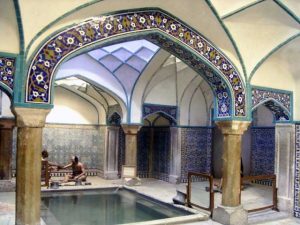 Ganj Ali khan Bath house
Ganj Ali khan Bath house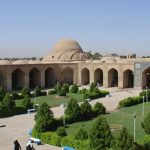
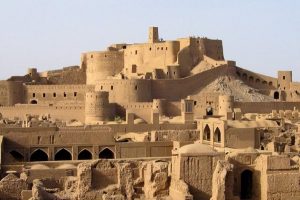 Arg-e bam
Arg-e bam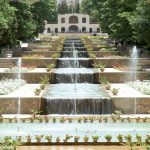
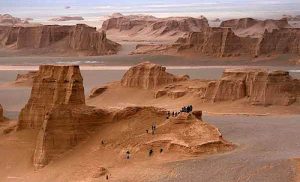 Kaluts
Kaluts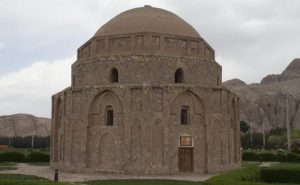 Gonbade jabalie
Gonbade jabalie